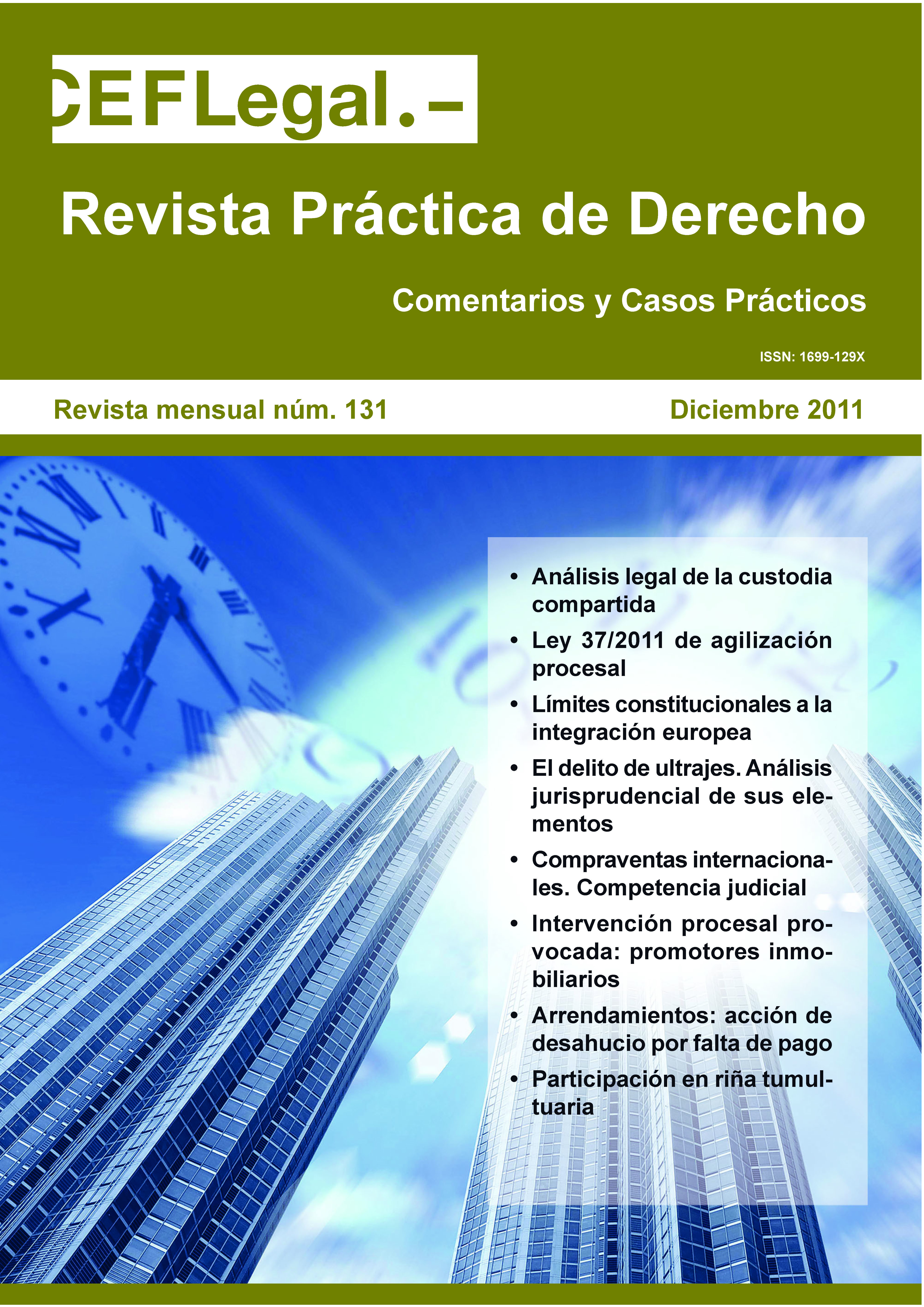El delito de ultrajes. Análisis jurisprudencial de sus elementos
DOI:
https://doi.org/10.51302/ceflegal.2011.12369Palabras clave:
delito de ultrajes, ofensas, nación española, publicidad, libertad de expresiónResumen
El Código Penal contiene, en su artículo 543, el denominado «delito de ultrajes», que trata de reprimir los comportamientos de signo antiespañolista tendentes a la ofensa de la nación española y su sentimiento de unidad. En concreto, el precepto señala que: «Las ofensas o ultrajes de palabra, por escrito o de hecho a España, a sus comunidades autónomas o a sus símbolos o emblemas, efectuados con publicidad, se castigarán con la pena de multa de siete a doce meses».
En este sentido, la conducta tipificada en el precepto consiste en realizar «ofensas o ultrajes», algo que doctrina y jurisprudencia han considerado equivalente a «injuria grave». En cuanto a las modalidades de comisión, las «ofensas o ultrajes» pueden efectuarse «de palabra, por escrito o de hecho». En los dos primeros casos, la ofensa parece menos ofensiva por cuanto no se utiliza la fuerza; en el caso de la ofensa «de hecho», parece más lesiva en tanto en cuanto implica la realización de una conducta que, en la generalidad de los casos, afectará a la bandera española.
Por otro lado, las ofensas han de ir dirigidas contra «España, sus comunidades autónomas, o sus símbolos o emblemas». La determinación de qué ha de entenderse por los conceptos anteriores ha sido efectuada por la jurisprudencia, que ha afirmado que son sujetos pasivos del delito «la nación española, el sentimiento de su unidad, el Estado, su forma política, así como sus símbolos y emblemas, siendo dichos símbolos o emblemas, principalmente, la bandera nacional o bandera de España […], el himno nacional y el escudo constitucional».
Las ofensas, en fin, han de realizarse con publicidad, lo que significa que deben ser realizadas en presencia de otras personas, pues «si tal elemento no concurre, la ofensa no trasciende al ámbito privado y resulta absolutamente inocua».
Queda apuntar, por último, la posible inconstitucionalidad del precepto, por tipificar unas conductas que, en los más de los casos, no serán sino manifestaciones de la libertad de expresión y del pluralismo político e ideológico.















